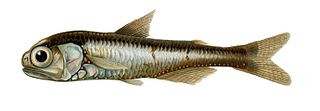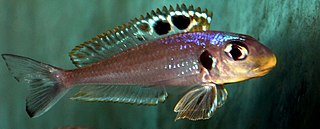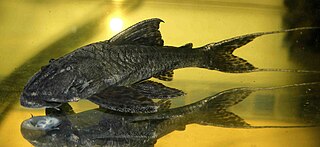
Extinction is the termination of a kind of organism or of a group of kinds (taxon), usually a species. The moment of extinction is generally considered to be the death of the last individual of the species, although the capacity to breed and recover may have been lost before this point. Because a species' potential range may be very large, determining this moment is difficult, and is usually done retrospectively. This difficulty leads to phenomena such as Lazarus taxa, where a species presumed extinct abruptly "reappears" after a period of apparent absence.

The International Union for Conservation of Nature (IUCN) Red List of Threatened Species, founded in 1964, is the world's most comprehensive inventory of the global conservation status of biological species. It uses a set of criteria to evaluate the extinction risk of thousands of species and subspecies. These criteria are relevant to all species and all regions of the world. With its strong scientific base, the IUCN Red List is recognized as the most authoritative guide to the status of biological diversity. A series of Regional Red Lists are produced by countries or organizations, which assess the risk of extinction to species within a political management unit.

The Amazon Basin is the part of South America drained by the Amazon River and its tributaries. The Amazon drainage basin covers an area of about 6,300,000 km2 (2,400,000 sq mi), or about 35.5 percent of the South American continent. It is located in the countries of Bolivia, Brazil, Colombia, Ecuador, French Guiana (France), Guyana, Peru, Suriname, and Venezuela.

Lanternfishes are small mesopelagic fish of the large family Myctophidae. One of two families in the order Myctophiformes, the Myctophidae are represented by 246 species in 33 genera, and are found in oceans worldwide. Lanternfishes are aptly named after their conspicuous use of bioluminescence. Their sister family, the Neoscopelidae, are much fewer in number but superficially very similar; at least one neoscopelid shares the common name 'lanternfish': the large-scaled lantern fish, Neoscopelus macrolepidotus.

The conservation status of a group of organisms indicates whether the group still exists and how likely the group is to become extinct in the near future. Many factors are taken into account when assessing conservation status: not simply the number of individuals remaining, but the overall increase or decrease in the population over time, breeding success rates, and known threats. Various systems of conservation status exist and are in use at international, multi-country, national and local levels as well as for consumer use.

The genus Panaque contains a small number of small to medium-sized South American suckermouth armoured catfishes that are notable for being among the very few vertebrates that feed extensively on wood. In addition, algae and aufwuchs are an important part of the diet, and they use their rasping teeth to scrape this from rocks. These fish are also popular aquarium fish, where the sound of scraping as these fish forage for food is easily audible.

Xenotilapia bathyphila is a species of cichlid endemic to Lake Tanganyika where it occurs in schools in areas with sandy substrates. It feeds on small shrimps and copepods. This species can reach a length of 10.3 centimetres (4.1 in) TL. It can also be found in the aquarium trade.

Halichoeres, commonly called wrasses, are a genus of fish in the family Labridae found in the Atlantic, Indian and Pacific Oceans.

An endangered species is a species that is very likely to become extinct in the near future, either worldwide or in a particular political jurisdiction. Endangered species may be at risk due to factors such as habitat loss, poaching and invasive species. The International Union for Conservation of Nature (IUCN) Red List lists the global conservation status of many species, and various other agencies assess the status of species within particular areas. Many nations have laws that protect conservation-reliant species which, for example, forbid hunting, restrict land development, or create protected areas. Some endangered species are the target of extensive conservation efforts such as captive breeding and habitat restoration.
In biology, a species is the basic unit of classification and a taxonomic rank of an organism, as well as a unit of biodiversity. A species is often defined as the largest group of organisms in which any two individuals of the appropriate sexes or mating types can produce fertile offspring, typically by sexual reproduction. Other ways of defining species include their karyotype, DNA sequence, morphology, behaviour or ecological niche. In addition, paleontologists use the concept of the chronospecies since fossil reproduction cannot be examined.
The deep-dwelling moray is a deepwater moray eel found in the south Pacific Ocean, around Easter Island and Desventuradas Islands. It reaches a maximum length of about 76 cm. The type specimen was taken at a depth of 250 m.
Åge Vedel Tåning was a Danish ichthyologist. He was a director of the Carlsberg Laboratory, the Dana collection and the Danish Fisheries Research Station.

The deepwater wrasse, Cirrhilabrus bathyphilus, is a species of wrasse native to the Pacific Ocean. It inhabits coral reefs and it can be found at depths from 60 to 217 m. This species can reach a standard length of 7.6 cm (3.0 in). It can be found in the aquarium trade.
Panaque bathyphilus is an Amazonian species of armoured catfish from the family Loricariidae. The holotype of the species was collected in the Solimões river, upstream of its confluence with the Purus river. This species has been known in the aquarium trade, at least since 1992, as papa panaque and under the L-number code L090. It reaches up to about 40 cm (16 in) in length.
Panaque schaeferi is a freshwater species of fish from the South American armoured catfishfamily Loricariidae. Panaque schaeferi is widely distributed throughout the upper Amazon in Peruvian and Ecuadorian rivers, and has been observed as far down as Santarém, Brazil. Growing to at least 600mm SL, it is one of the largest, and likely heaviest species of Loricariid. It has been known in the aquarium trade since, at least, 1996 under various names such as 'Titanic pleco' and 'Volkswagen pleco', also L203 and LDA065 under the L-number code. Juveniles are often confused with Panaque bathyphilus and erroneously called L090c.

Peckoltia pankimpuju is a species of armored catfish from the family Loricariidae, native to the Marañón River in the upper Amazon basin of Peru. It is commonly called the coal pleco, Peruvian lyre-tail, and L350 under the L-number code. It reaches up to about 40 cm (16 in) in length.
Taaningichthys minimus is a species of lanternfish.
Taaningichthys paurolychnus is a species of lanternfish.









